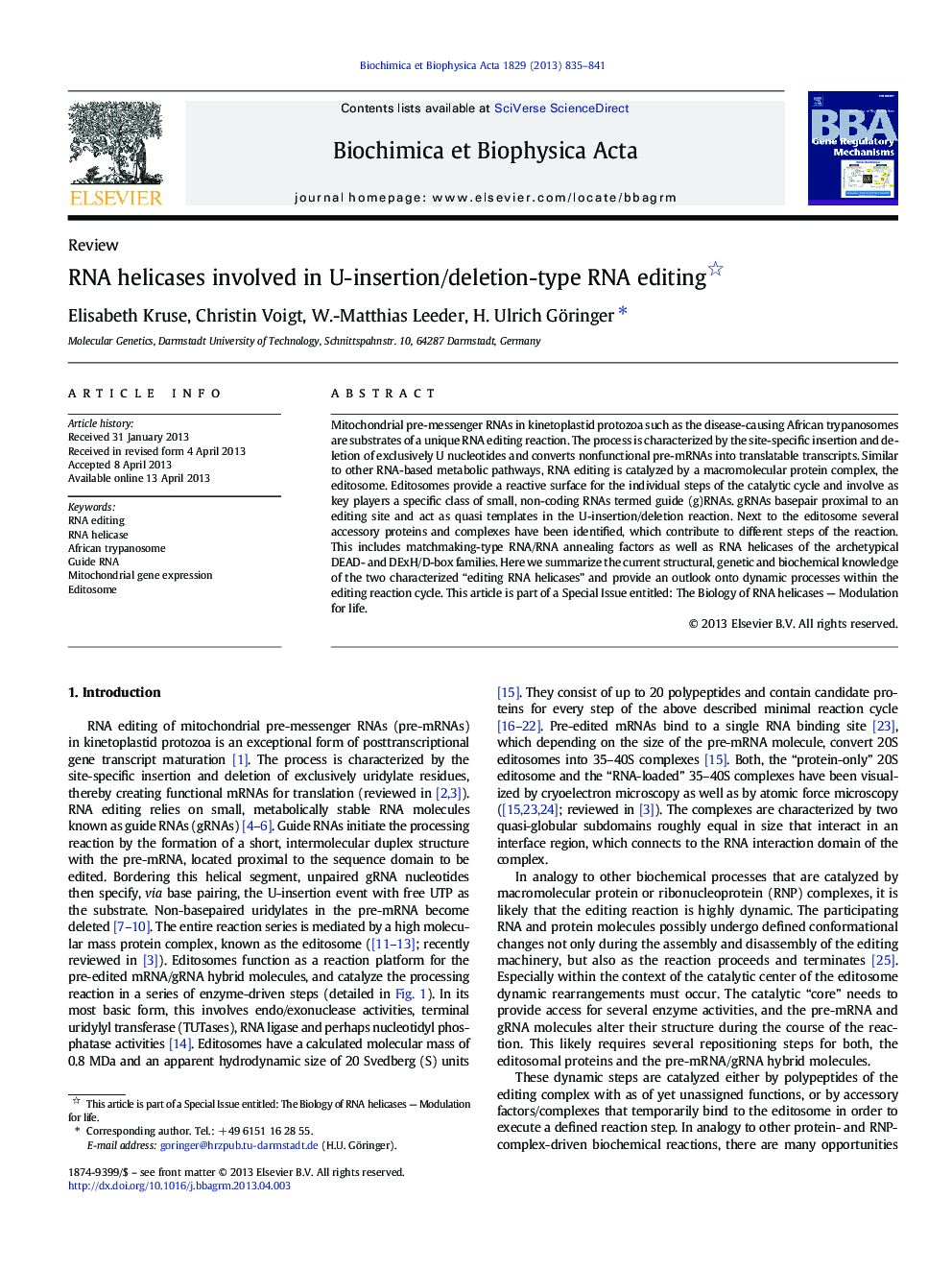| Article ID | Journal | Published Year | Pages | File Type |
|---|---|---|---|---|
| 10799218 | Biochimica et Biophysica Acta (BBA) - Gene Regulatory Mechanisms | 2013 | 7 Pages |
Abstract
Mitochondrial pre-messenger RNAs in kinetoplastid protozoa such as the disease-causing African trypanosomes are substrates of a unique RNA editing reaction. The process is characterized by the site-specific insertion and deletion of exclusively U nucleotides and converts nonfunctional pre-mRNAs into translatable transcripts. Similar to other RNA-based metabolic pathways, RNA editing is catalyzed by a macromolecular protein complex, the editosome. Editosomes provide a reactive surface for the individual steps of the catalytic cycle and involve as key players a specific class of small, non-coding RNAs termed guide (g)RNAs. gRNAs basepair proximal to an editing site and act as quasi templates in the U-insertion/deletion reaction. Next to the editosome several accessory proteins and complexes have been identified, which contribute to different steps of the reaction. This includes matchmaking-type RNA/RNA annealing factors as well as RNA helicases of the archetypical DEAD- and DExH/D-box families. Here we summarize the current structural, genetic and biochemical knowledge of the two characterized “editing RNA helicases” and provide an outlook onto dynamic processes within the editing reaction cycle. This article is part of a Special Issue entitled: The Biology of RNA helicases - Modulation for life.
Related Topics
Life Sciences
Biochemistry, Genetics and Molecular Biology
Biochemistry
Authors
Elisabeth Kruse, Christin Voigt, W.-Matthias Leeder, H. Ulrich Göringer,
